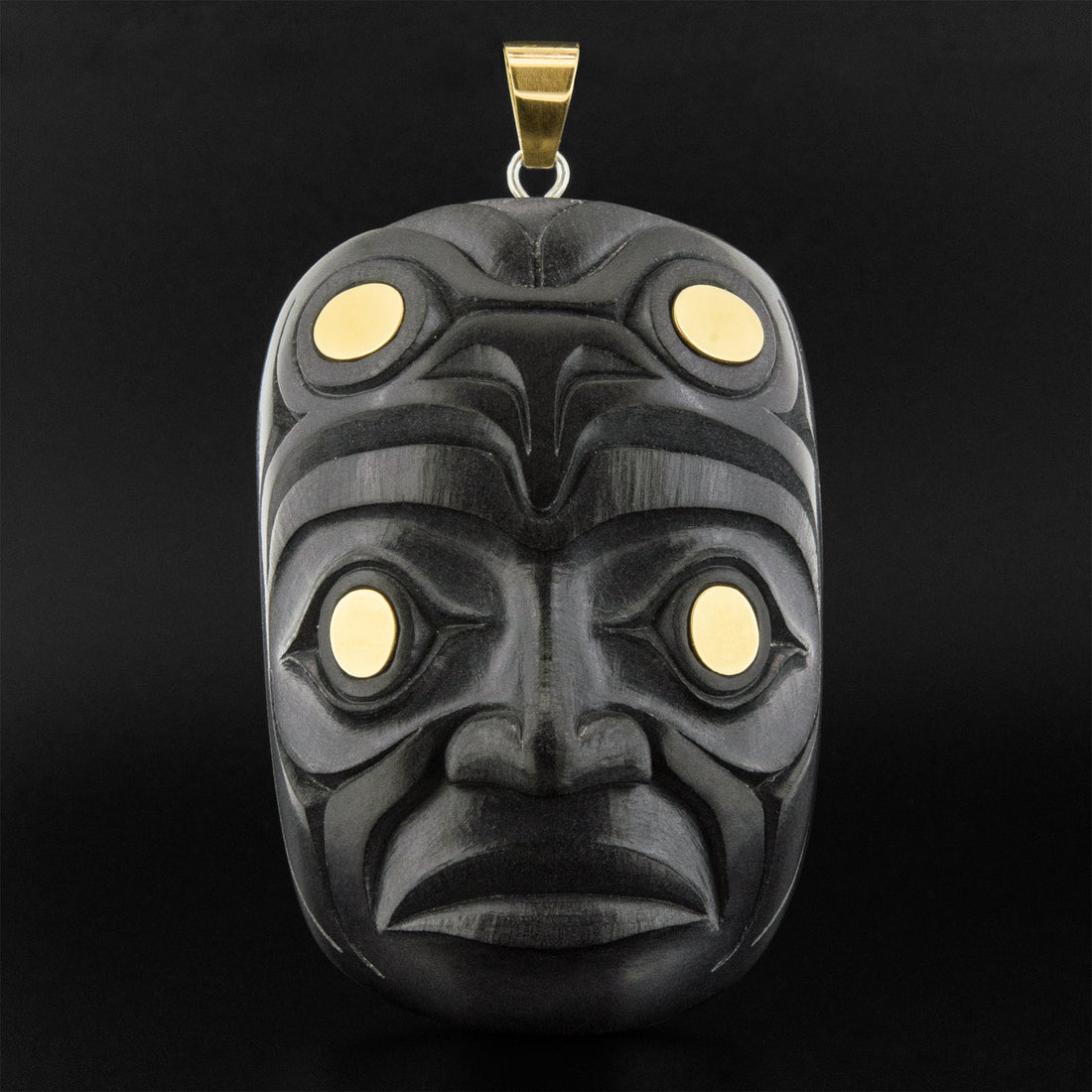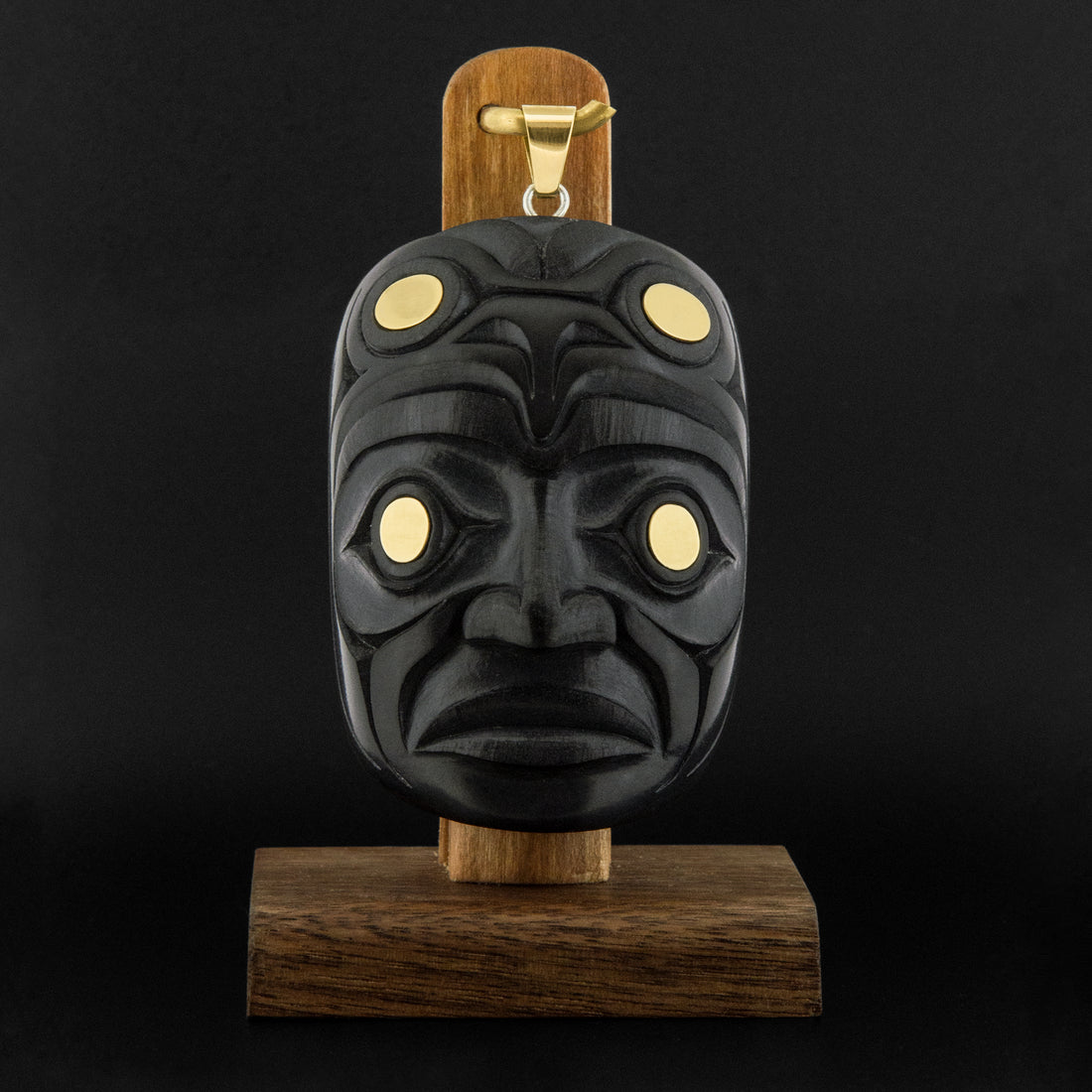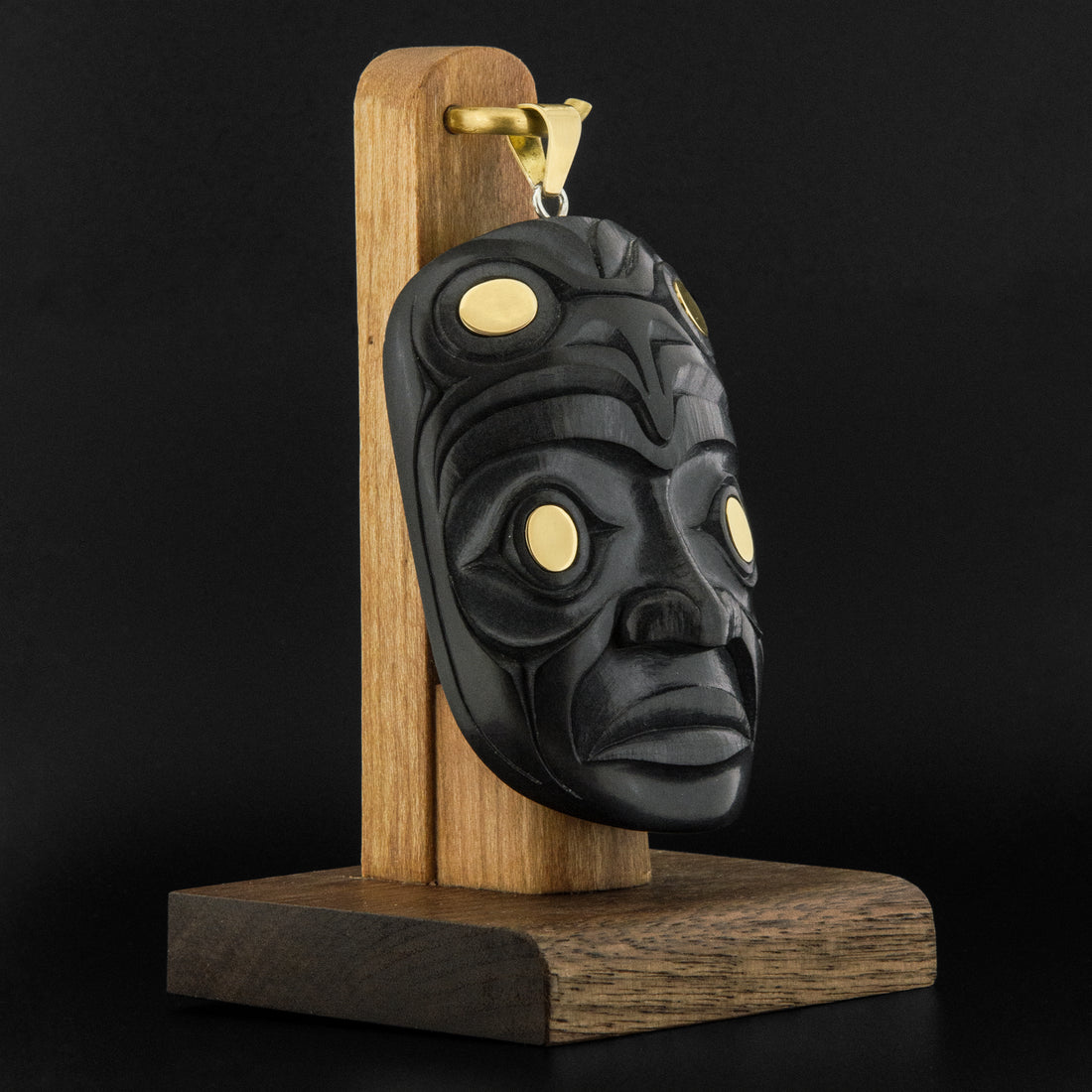Heredity - Pyrophyllite Pendant with 14k Gold




Heredity - Pyrophyllite Pendant with 14k Gold
3 1/4" x 1 3/4" pyrophyllite stone pendant.
4" x 2 1/2" x 2 1/2" wood stand.
"So I was inspired to start carving stone by the abundance of ancient Salish stone carvings in the archeological/anthropological record. After doing some more research, I learned that the Salish carved a rare type of harder black to dark-green steatite. After years of study, I’ve decided to carve this stone to honor the carvers of the past, with the hopes of (in whatever small way) helping to revive the Salish stone carving tradition.
The title of this pendant is “Heredity”, and it represents the cycle that many sacred names and privileges have undergone through the past millennia. To carry an ancestor’s name is a significant responsibility in Salish culture. And in the past, to receive a sacred name, a person would have to undergo years of cultural training. Once a name was received, an individual would be accepting the many rights and responsibilities that went with the name. He would carry this name until his death, but the name would be passed onto a descendant, and the cycle would start again. The ancestor depicted in this pendant has an owl spirit across his forehead. This owl represents the ancient names and privileges he is carrying into the future."
- Dylan Thomas
This piece was created for the exhibition ‘Cycles: Themes of Renewal in Northwest Coast Jewellery’ at Lattimer Gallery between September 18 – October 2, 2021.
Dylan Thomas
CULTURAL GROUP:
Coast Salish (Cowichan)
BORN:
March 3, 1986
BIRTHPLACE:
Victoria, BC
Dylan Thomas is a Coast Salish artist from the Lyackson First Nation. His family is culturally and artistically active, and he was exposed to art and artistic processes at a very young age. Several years ago, Dylan worked with late Coast Salish carver Delmar Johnnie to learn engraving techniques, and he has apprenticed under Kwakwaka'wakw artist Rande Cook. Dylan learned wood carving, painting, and jewellery carving from Rande, and Rande has also been a major help to Dylan when considering design and form. Dylan cites Art Thompson, Susan Point, and Robert Davidson as his main sources of inspiration.




